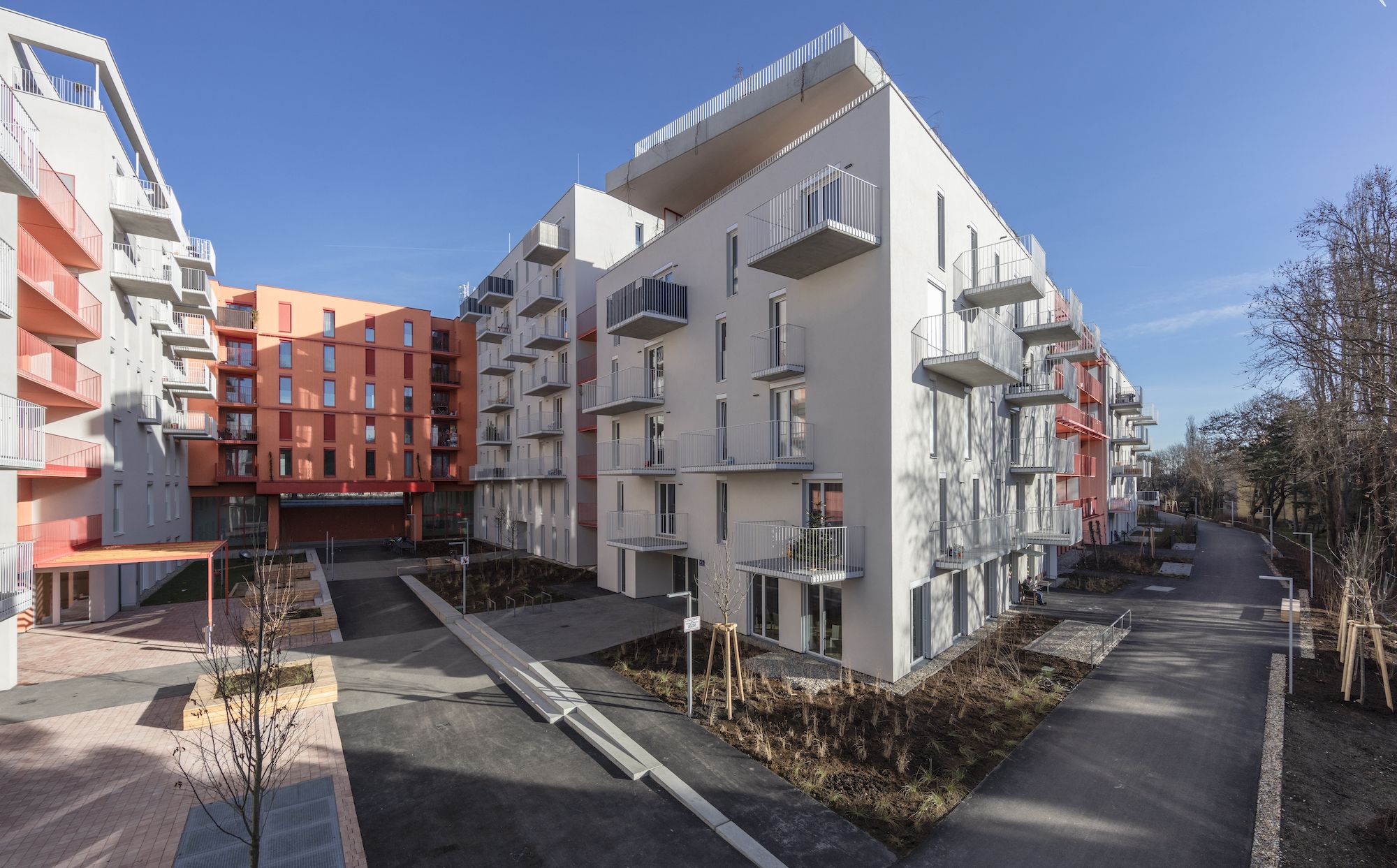Wientalterrassen Residential Quarter / Berger+Parkkinen Architekten
+ 27
More Specs
Less Specs
Text description provided by the architects. The 30,000 m2 flagship residential quarter Wientalterrassen in Käthe-Dorsch-Gasse in Vienna's 14th district was recently completed by the Austrian-Finnish architectural firm Berger + Parkkinen in a joint venture with architect Christoph Lechner & Partner. The residential complex was awarded klimaaktiv Gold and, with its energy concept, extensive use of green roofs, solar cells, and energy technology innovations, is a prime example of sustainability in practice in construction and operation. Berger+Parkkinen, who was awarded the Austrian State Prize for Architecture and Sustainability 2021, provides another example of their expertise in future-oriented, ecologically- conscious architecture with this project.
The design of the Wientalterrassen residential complex emerged in 2018 as one of the two winning projects for the Käthe-Dorsch-Gasse location from a developer competition organized by ÖBB Immobilienmanagement GmbH and Wohnfonds _Wien.
After three years of construction, a 30,000 m2 residential complex was created, offering various housing options oriented toward different lifestyles. The project comprises a total of 295 flats - 196 subsidized rental apartments, 99 smaller SMART flats as well as two shared flats for children and young people and two assisted units for people with special needs. In addition, the complex includes a day center run by the administration of the Wiener Pensionist:innenheime (Vienna Retirement Homes), which connects generations, as well as another day center for external wheelchair users and office space.
The ensemble consists of five houses across the Vienna River and connecting buildings along the valley. The north side facing the railway appears as a long, rhythmic "back" with individual glazed openings into the inner courtyards. The partially open and partially closed courtyards are the heart of the complex and are ideally suited for outdoor communication and interaction.
In order to make the special location in the Wiental an experience for all residents, generous terrace areas are planned above the lower, south-facing components. In their staggered arrangement, also in terms of height, the three "Wientalterrassen" offer a special open space for the people living there.
The difference in height to the railway site in the north is characteristic of the project. In accordance with the dedication, the building structures descend from the higher railway level towards the south and the existing residential buildings. As a result, all flats are oriented exclusively to the south, west, and east.
The planting of the inner courtyards, roofs, façades, and the three communal terraces creates a diverse flora that is intended to help combat the urban heat islands that arise in summer.
The floor plans can be modulated in a variety of ways and are designed to be flexible. Only lightweight walls were used in the flats; in some areas, there are also "switch rooms" that can be closed or separated without too much effort. By removing partition walls between the living and sleeping areas, loft-like, open-plan room structures can also be offered.
Both the division into smaller units and the connection to even larger units are thus provided for in the residential complex. Arbitrary adaptations for surgeries and offices of different uses are also possible without any problems. The resulting flexibility is also an essential quality of the design in terms of sustainability.
The Wientalterrassen residential complex is characterized by a number of innovative sustainability features that set it apart from other construction projects in Vienna. One of the special features of the project is the extensive use of green roofs and solar panels, which not only improves the design of the buildings but also offers important environmental benefits. The Wientalterrassen also features a state-of-the-art solar panel system that helps to significantly reduce the project's carbon footprint and energy consumption. The solar panels are integrated into the design of the buildings, creating a seamless and visually appealing aesthetic.
Heat is supplied by a geothermal system consisting of two deep probe fields and a solar absorber system, as well as three heat pumps.
In addition to these elements, Wientalterraces also integrates energy-efficient systems throughout the building, including high-performance windows and insulation, and water-saving fixtures in all bathrooms. The development also includes an on-site recycling system that promotes a sustainable lifestyle for its residents and visitors.
One of the most striking aspects of the residential development is the rooftop garden and terrace, which offer panoramic views of the city. The terrace is designed as a public space for the community and encourages outdoor activities and social interactions. The roof garden also serves as an "environmental buffer" that helps reduce the urban heat island effect and provides an urban oasis for city dwellers.
Source: ArchDaily


